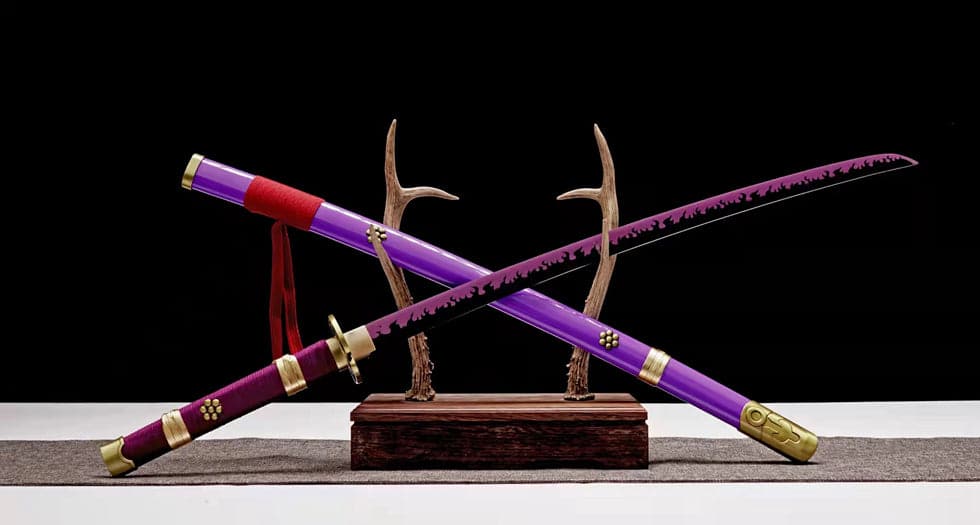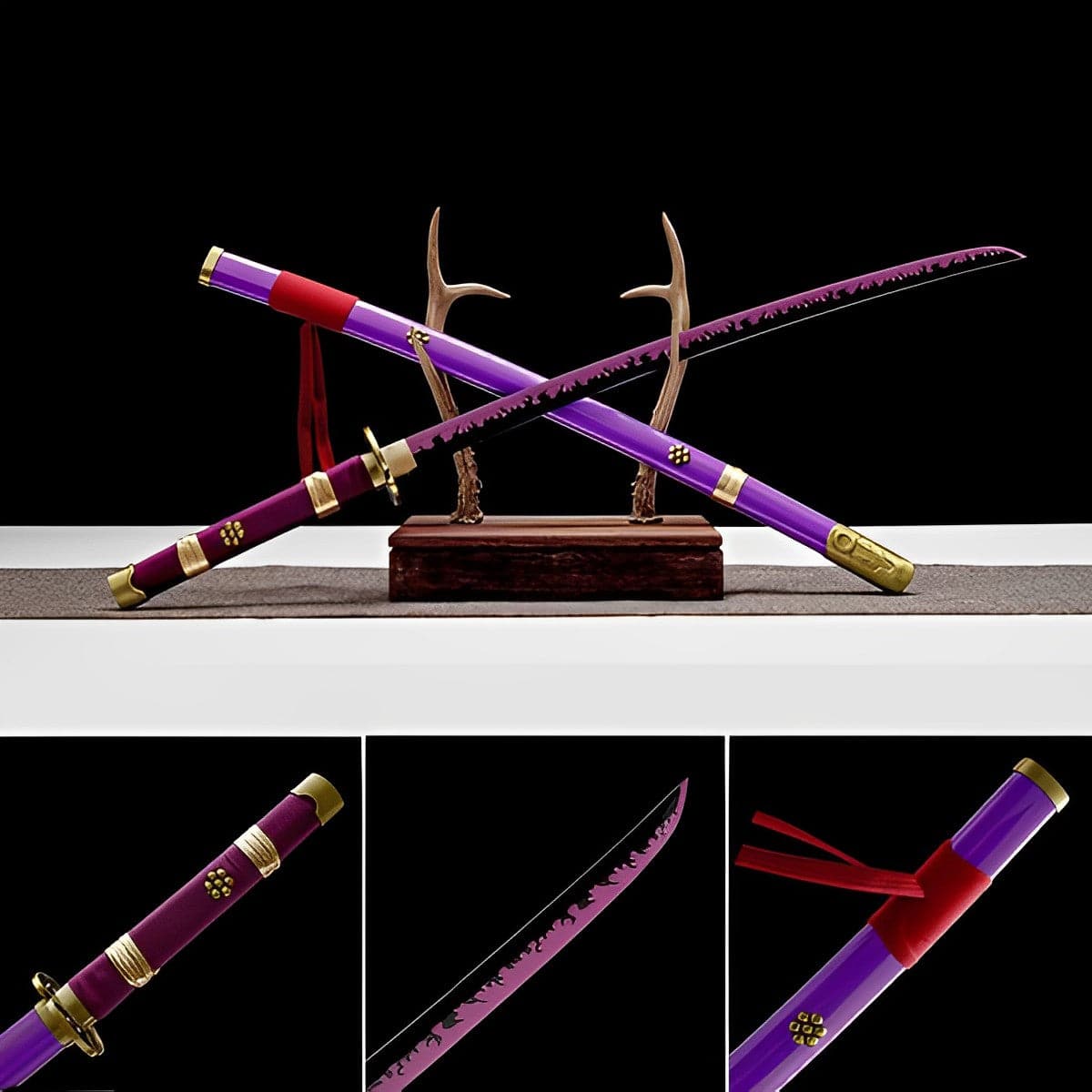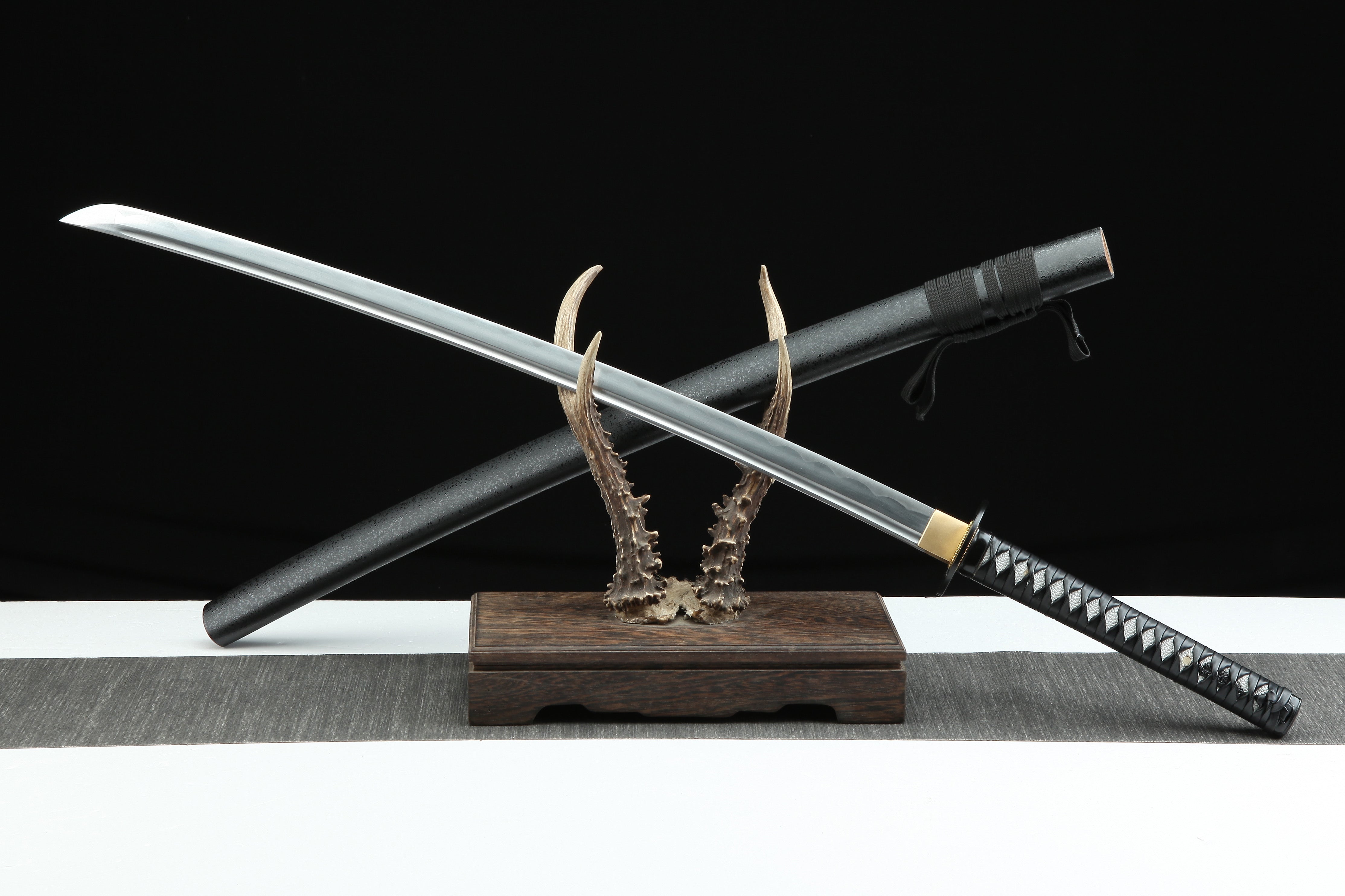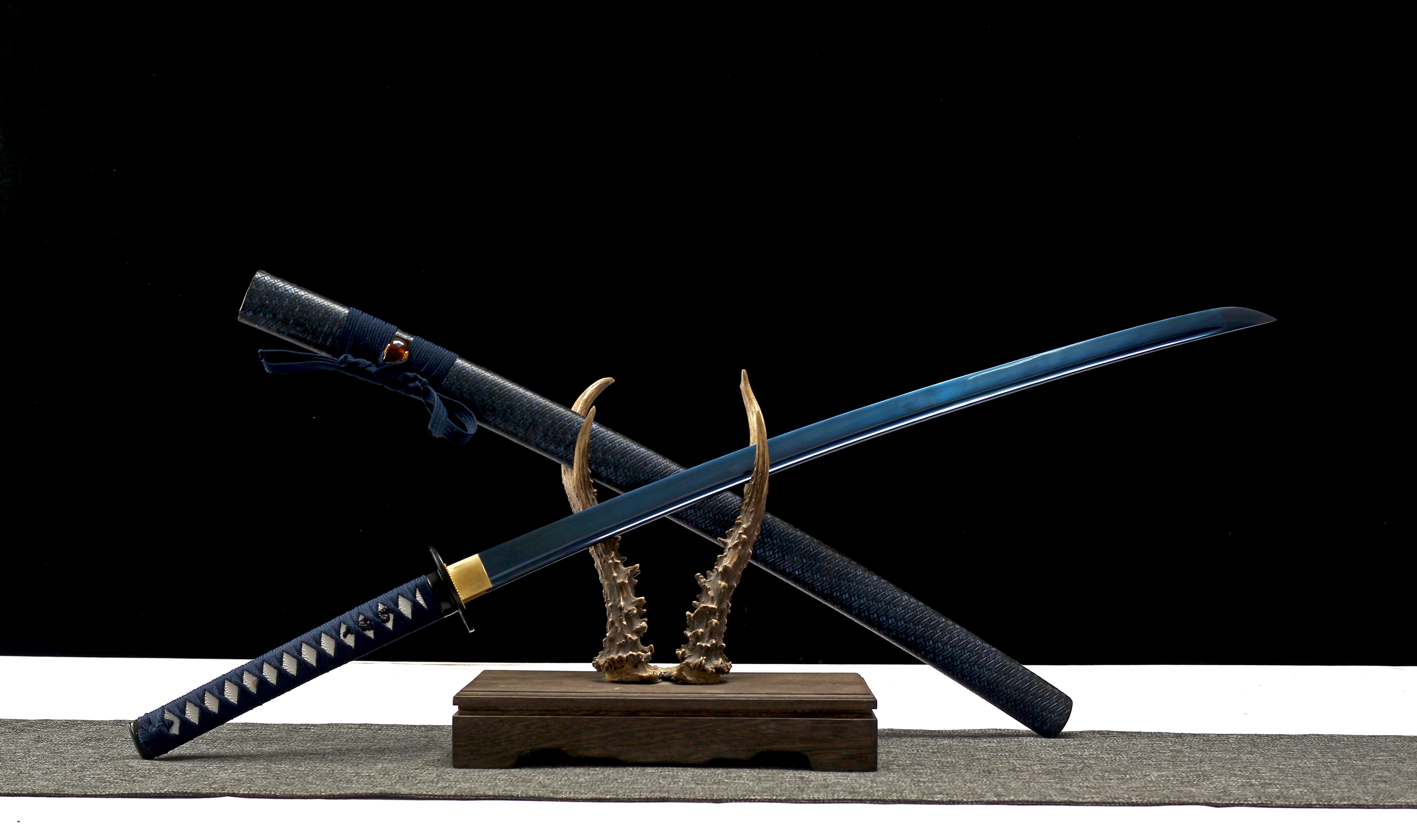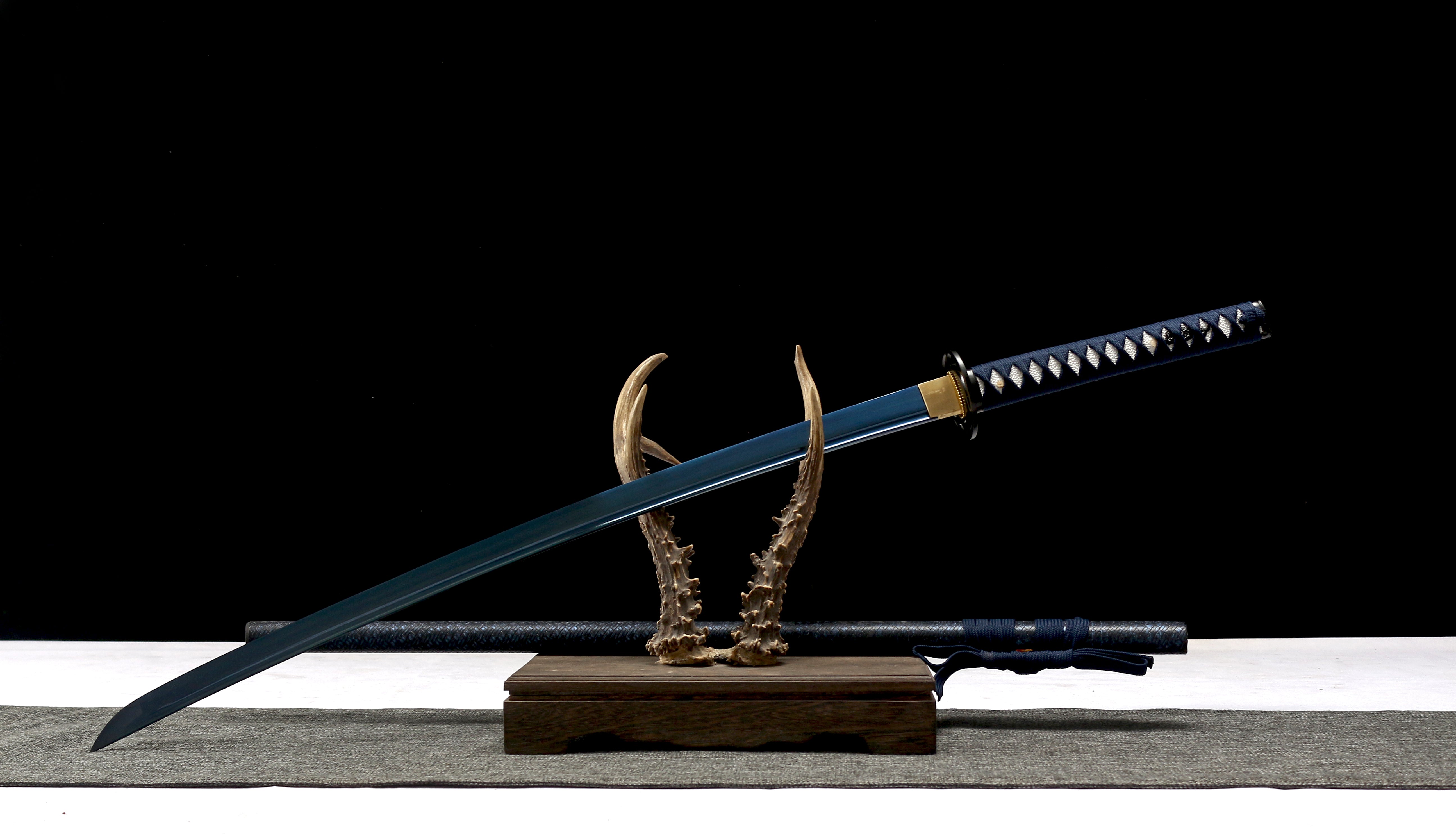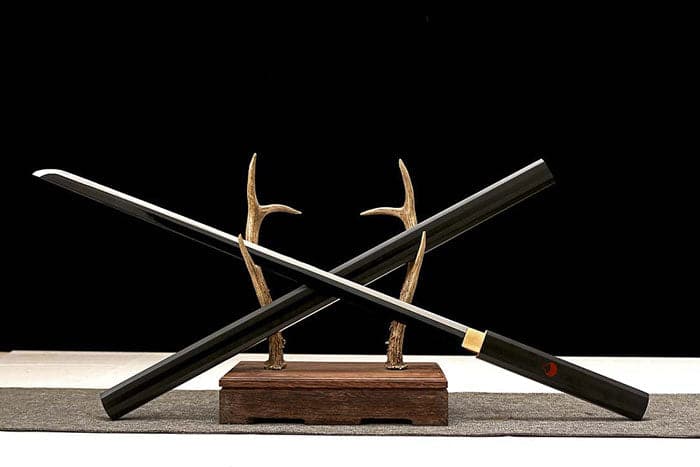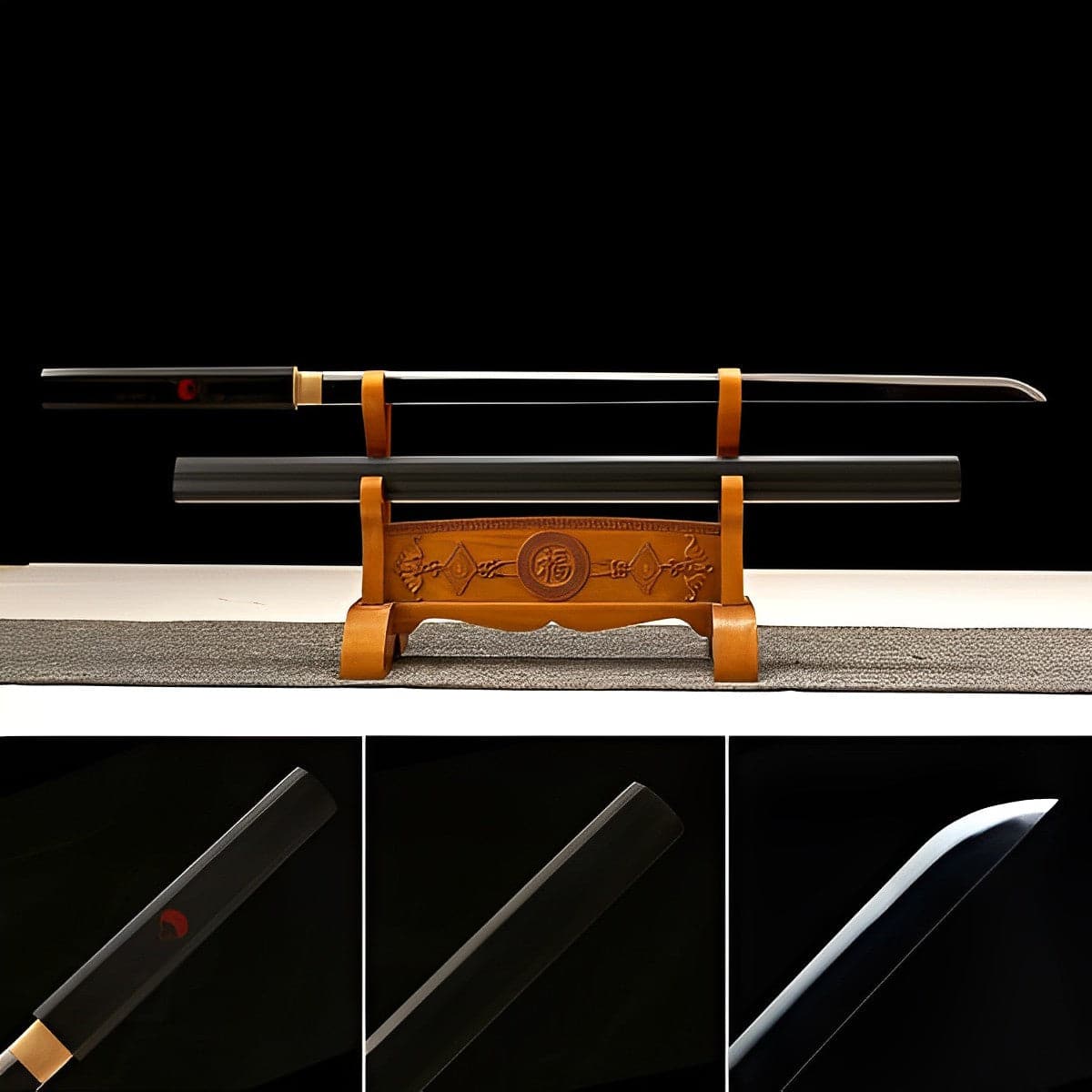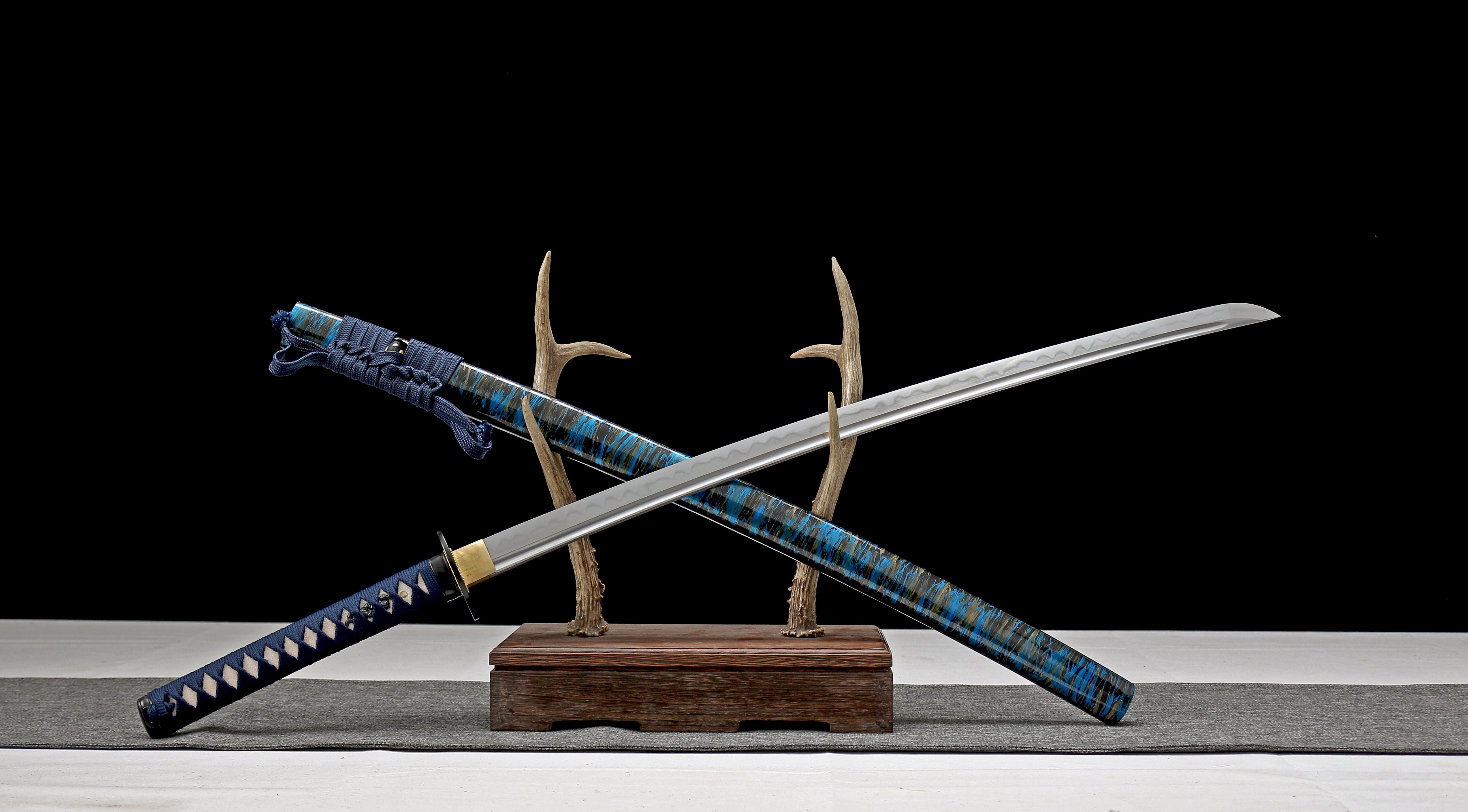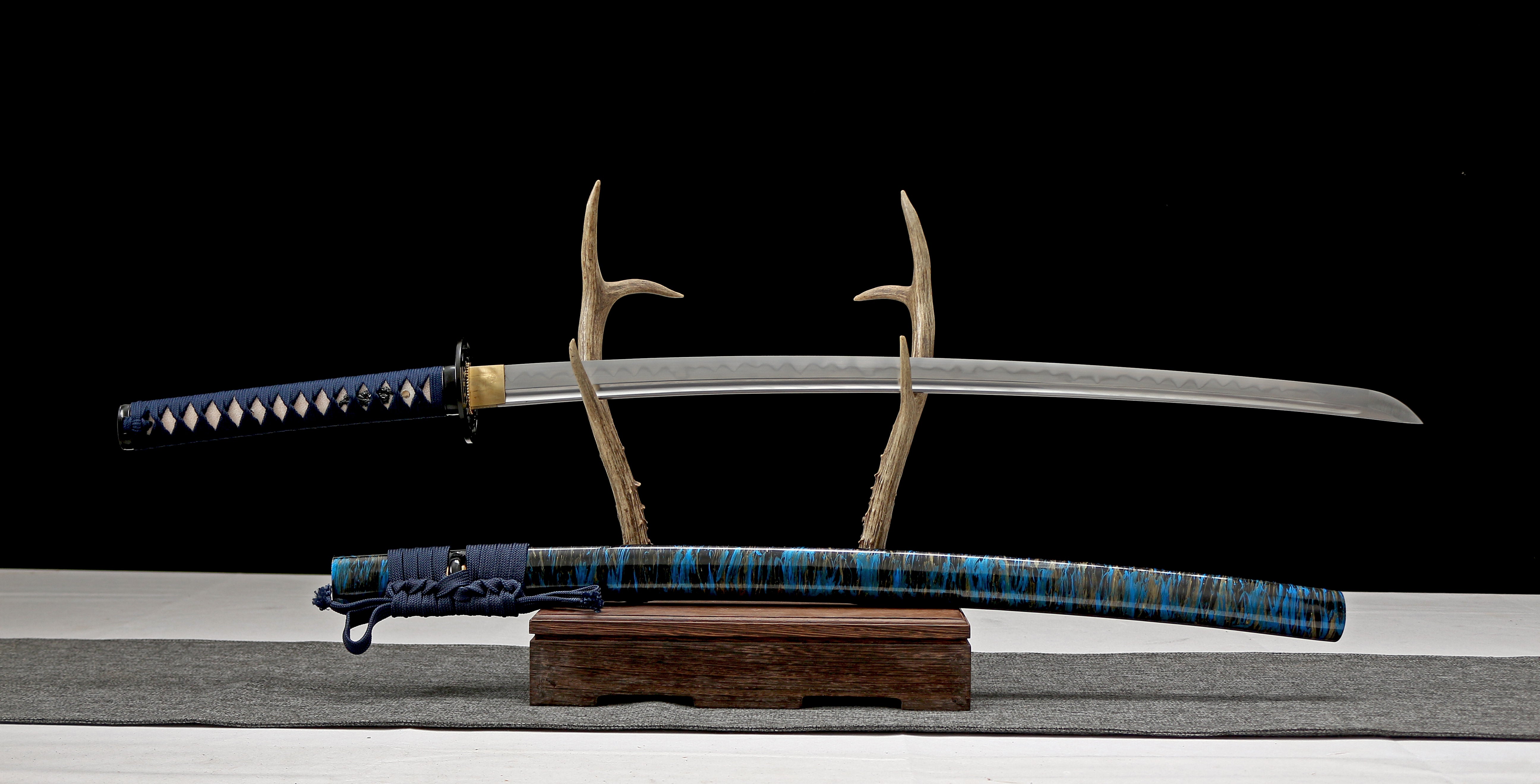Katana Guide
Katana Guide
If you want to understand the katana sword, you can start by memorizing the various parts of the katana sword and the corresponding terminology to understand its composition. Next, let's get more detailed information about the katana sword!
 Table of Contents:
Table of Contents:
1.Japanese Katana Blade
2.Between The Katana Blade and The Handle
3.Japanese Katana Hilt
4.Japanese Katana Scabbard
1.Japanese Katana Blade

Nagasa
Nagasa refers to the straight-line distance from the Munemachi to the tip of the katana blade, which is the length of the katana blade.

Mono-uchi
Main cutting portion of blade (first six inches from kissaki). The area closest to the Kissaki of the three areas of the blade.
Yokote
Yokote refers to a clear line of demarcation between the kissaki and the rest of the blade, but not all katana swords have Yokote.
Kissaki
Kissaki is the tip of a samurai katana sword, starting with the Yokote that separates the rest of the katana blade from the tip, and the area of the kissaki varies in size.
Hasaki
Hasaki is the extreme point of the edge.

Shinogi & Shinogi-ji
Shinogi and Shinogi-ji are the most easily remembered pair, with Shinogi being the ridge where the edge of the katana blade transitions into the flat part of the katana blade. The flat part is known as Shinogi-ji.
Ji
Also called Hiraji. The area between shinogi and hamon.
Hamon
Hamon is a visible effect created on the katana blade by the quenching process, Hamon is the profile of the quenched area of the cutting edge.
Ha
Ha is the range in which the edger slope is hardened by quenching.
Mune
Mune is the back of the katana blade, known as the tip that is harder than the spine part of a cool Japanese sword. The difference lies in the use of clay on the blade during the cooling process or quenching.

Bo-Hi
Hi/Bo-Hi are grooves etched into the Japanese katana blade that help reduce weight slightly and keep the cool samurai swords balanced without sacrificing its durability.
2.Between The Katana Blade and The Handle

Seppa
Seppa is a pair of identical "spacers" or "washers" that are used to securely fill the gap between the tsuba and handle assembly. At the same time, acts like a shock absorber to absorb shock and pressure and protect the other parts in the katana sowrd assembly.
Tsuba
Tsuba is the guard at the end of the blade's grip, which helps balance the katana weapon and protect the hand.
Fuchi
A cap type collar or ferrule which covers the opening in the tsuka of a Japanese sword. The tang of the katana sword goes into the tsuka through the opening in the fuchi. Increased the strength of the handle.

Habaki
Habaki is a piece of metal that wraps around the base of the katana blade. The habaki helps lock the tsuba in place, locking the blade in the saya and preventing the katana sword from slipping out easily.
3.Japanese Katana Hilt

Menuki
Menuki are metal ornaments woven under the ito, usually with one side forward and the other side backward.
Mekugi
Mekugi are the nails used to hold the handle of the katana sword to the blade of the blade.

Ito
Ito refers to the wrap used on Japanese katana sword hilts. Most are diamond-shaped.
Kashira
Kashira is the cap at the end of tsuka. For securing and gluing the ito wrap as well as securing the entire handle assembly.
Kashiragane
Kashiragane refers to the hole in which the tsuka is bound.
Makidome
The ito usually forms a knot on one side of the tsuka, then crosses or crosses the kashira to form the final knot. This process is called maki-dome.

Same(Rayskin)
The katana rayskin helps to bind the handle, and the uneven surface also helps ito to increase the friction force to grip the katana handle.

Yasurime
Yasurime refers to the patterns carved by the craftsman on the stem of the katana blade to increase friction and make the handle less likely to fall off.
Munemachi
Munemachi is a 3-5mm groove in the back of the Japanese katana blade spine that can be inserted into the habaki.
Hamachi
Hamachi is notch in the cutting edge (ha), dividing the katana blade proper from the tang.
Full Tang Katana Sword
When a katana sword is full tang, it means that the metal extends along the entire length of the handle and is strong and continuous. The full tang katana swords adds strength and also provides leverage.
4.Japanese Katana Scabbard

Saya
Saya is a Japanese samural sword scabbard, scabbard. Usually made of lacquered wood. A fitted saya can not only keep the blade upside down and not fall off, but also can easily pull out the katana blade.

Koiguchi
Koiguchi is the mouth of the katana saya, traditionally made of buffalo horn.

Kurigata
The kurigata is the protrusion about 1/3 down the saya opening that secures the sageo cord to the scabbard.
Shitodome
Shitodome is a decorative metal that is installed inside the Kurigata.
Sageo
Sageo is the rope used to fasten the scabbard of the katana sword to the belt.

Kojiri
Kojiri is the sheath at the end of the scabbard, which is mostly made of metal.
Productordion
A katana is a jpanese sword characterized by a curved, single-edged blade with a circular or squared guard and long grip to accommodate two hands.
The katana is generally defined as the standard-sized, moderately curved Japanese sword with a blade length greater than 23.86 inches. It is characterized by its distinctive appearance: a curved, slender, single-edged blade with a circular or squared guard and long grip to accommodate two hands.
Western historians have said that the katana was among the finest cutting weapons in world military history.
